Equatorial Guinea’s Only Travel Guide You Need For A Great Trip in 11 Easy Steps
- Destinations Africa
Cruisit Team
- August 20, 2022
- 0
- 4882
- 67 minutes read

Equatorial Guinea’s Background
Equatorial Guinea’s early inhabitants were the Pygmies and Ndowe societies dating back as far as 1000 AD, followed by a Bantu migration during the 12th to 13th centuries. The Fang, one of the Bantu ethnic groups were an organized civilization and relentless soldiers who were able to repel early Portuguese explorers in the 15th century, however, they couldn’t repel them for long. The Portuguese settled in Biko, home to the Bubi civilization. Fernando do Pó established Bioko in 1472 and named it Fernando Po, the history of Equatorial Guinea was marked by Portugeuse domination for centuries until they Annobón to Spain in the 18th century. However, after the abolition of slavery in the 19th century, numerous locations in Equatorial Guinea were leased to the British to combat the slave trade when it was banned. Spain’s absence, the British ruled the island, and tried to acquire the Island multiple times in the mid-19th century. However, the Spanish retook Fernando Po shortly after.
After the Spanish-American War, Spanish Guinea became Spain’s last tropical colony. France reduced mainland Spanish Guinea by exploiting Spain’s weakness. Only then did economic growth begin, and it concentrated on Fernando Po. After the Spanish Civil War, Spain focused on the mainland during the 1930s. Equatorial Guinea, Spanish Guinea at the time, was split into two provinces with their own civil governors. All individuals, including Africans, were given Spanish citizenship privileges. In 1963, two provinces, now known as Equatorial Guinea, voted for economic and administrative autonomy. Finally, Equatorial Guinea gained its independence in 1968.
Due to its colonial past that lasted for centuries, Equatorial Guinea took its last colonial tongue, and is considered the only Spanish speaking country. A little country in Central Africa, off the Gulf of Guinea, nestled between Cameroon and Gabon with around 1.4 million people to its name. This tiny African nation has both a mainland, and five populated islands. Its capital was on the continental side of the country, but, Equatorial Guinea’s capital is Malabo, situated in the island of Bioko. The main cities in the continental region are Bata and Mongomo. Despite severe inequities, this little Central African jewel boasts one of Africa’s highest per capita incomes. Equatorial Guinea is one of Africa’s most literate countries.
The nation is relatively unknown to many, and untouched by mass tourism, however, people are missing out on stunning landscapes and natural beauty. Avid travelers are faced by road blocks as the country is known as one of the hardest countries to visit. The country may not be everything it could be, however, it is still a magnificent piece of land, despite its turbulent political scene, some travelers opt for the challenge of visiting Equatorial Guinea, one of the least visited countries in the world, at around 6,000 visitors a year. This is not due to a lack of spectacular natural beauty or things to see and do. This lack of visitors is not due to its scarce natural beauty, quite the contrary, it is just known to be the hardest to obtain a visa, and even if you get it, it doesn’t guarantee your entry. However, things are changing, and now, it is much simpler to visit the country.
Equatorial Guinea is not a destination where tourism infrastructure is laid and where it is easy to navigate, but this is part of its charm. Travel may be difficult, as hotel rooms are both scarce and costly in comparison to neighboring states. However, once you do secure a place to stay and a tour guide to help you with you journey you are in for a treat. Explore pristine rainforest buzzing with rare wildlife, doze on idyllic beaches where crystalline waters lap sands soaked in history, and admire unique colonial architecture frozen in time.
“A country with a colonial past, hard to get to, yet is still an intriguing nation for the avid traveler. Uncover its ruins and structures, and its appealing nature of laid back beaches and pristine forested peaks.“
This is the country of painted primates, delicate clouds of butterflies, and insects so vibrant they belong in a fantasy world. Yes, Equatorial Guinea has a reputation for failed coups, corruption charges, and buckets of oil, but there is much to entice you to this country’s gorgeous black-and-white coastlines.
Malabo, the capital, lacks the hectic vitality of other cities on the continent, with little occurring at breakneck speed. Its serenity and laid-back atmosphere may be attributed to its location on the sweltering island of Bioko. Its fascinating side lanes are the greatest spot in the country to see architectural marvels left by Spain’s colonial authority. The capital combines historical grandeur with modern oil corporation high-rises while retaining an African feel with colorful marketplaces and a bustling harbor.
Beyond Malabo, on Bioko Island, there are volcanic vistas, fishing communities, jungles teeming with endangered monkeys, vivid birds, and nesting sea turtle beaches. Rio Muni’s pristine beaches, wooded pathways, and jungle-scapes await on the mainland.
Rio Muni, on the mainland of Equatorial Guinea, has been designated as a protected zone. The country’s rainforests, which are worldwide recognized for their biodiversity and trekking possibilities, are home to a variety of endangered primates, such as mandrills, chimps, and gorillas, as well as forest elephants.
To enjoy Equatorial Guinea the most, you will want to stay on the move in order to see and do as much as you can of what the nation has to offer for tourists. In this Cruisit Equatorial Guinea’s travel guide, we give you a plan that falls halfway in the middle, with a good mix of leisure and discovery. Enter the country and fully experience and explore this hidden African dream destination. Equatorial Guinea’s trip plan that we provide below is best experienced in the country’s high season, but you can also enjoy the shoulder season as much. Your African fantasies will come true, with warm days beside pristine beaches in the company of legend, and surrounded by lush forests and dramatic high-peaked volcanos, not to mention hundreds of wildlife species to discover.
Also, in our travel guide to Equatorial Guinea, we will provide you with all the information you will need to navigate the country at ease. Equatorial Guinea’s highlights, tips, transportation, top places and attractions, a handcrafted itinerary in Equatorial Guinea, and more will be provided for you as you read through. If you are excited enough by now, let us dig right in!
- Dip your feet in pristine waters on the idyllic Island of Corisco
- Visit Cathedral de Santa Isabel
- Explore the Ilachi Waterfalls on a Jungle Book adventure.
- Experience the richness of biodiversity in Monte Allen National Park.
- Watch huge Leatherback Turtles laying eggs, From November to January.
- Hike up San Joaquin to see the small lake-filled volcano
- See Mother Bisila in Pico Basilé the country’s highest peak
- Go to the island of Annobon
- Dip in Ureka’s breathtaking waterfalls
- Kickback at Playa de Arena Blanca
- Some tourist attractions on Bioko Island, such as the Moka Valley, Ureka, and Basilé Peak, require government authorization to visit. If you’re with a tourism agency, they should handle it.
- In the Continental Region, permission to travel through tourist sites is normally necessary and is provided by the Regional Tourist Office or, when applicable, by the Bata regional police.
- Even though bush taxis exist, public transit in Equatorial Guinea is restricted to taxi services. This implies that the most convenient way to move about Equatorial Guinea is to drive, hire a driver, or employ a transportation firm. Driving can get a little crazy and wild at times. We do not advise you to drive.
- Taxis are pooled. As a result, don’t be alarmed if someone else gets into the cab with you; this is typical.
- Avoid the far and lonely streets at all times of day and night, and don’t display your belongings or exhibit money in public.
- Equatorial Guinea has endemic tropical illnesses including malaria and typhoid fever. It is strongly advised to follow a doctor’s prophylaxis and apply insect repellent. These disorders are not dangerous to one’s health. However, if left untreated, they can be lethal.
- The healthcare facilities on both the island of Bioko and the continental region are fully equipped to handle this sort of sickness.
- Before you leave, brush up on your Spanish. However, French and Portuguese are also spoken but are rarely utilized.
- Equatorial Guinea has a reputation for being generally safe, with no big incidents documented in recent history.
- Equatorial Guinea is frequently recognized as one of the hardest nations to enter. Many people have tried and failed. You will not be permitted to enter if you do not have a visa.
Crime & Scams in Equatorial Guinea
Equatorial Guinea is a relatively safe place to visit. In comparison to other nations in the region, the country has a low prevalence of violent crime, and there have been relatively few events of tourists getting into problems or requiring assistance from their embassies. It does, however, have an exceptionally high crime rate, but it is primarily plagued by small street crime. Armed robbery and house break-ins are common, especially in Bata and Malabo, with the threat growing at night. Avoid places bordering Cameroon as well. Women traveling alone may face some type of harassment or verbal abuse.
Coastal waters can be potentially dangerous due to prevalent riptidest. Many beaches do not provide warnings about harmful conditions, and lifeguards are not constantly on duty. Pirate assaults and armed robberies against ships occur in coastal areas and, in rare circumstances, further out at sea. On the road, drivers can be irratic and aggressive. They frequently drive at high speeds. Drinking and driving are commonplace.
Political tensions in Equatorial Guinea may lead to violent incidents, therefore avoid being in a position where you might be invovled. Gunfire shook residents and foreigners in Malabo, the capital, in early 2009, but things are under control again. Never attend a political rally or demonstration. Police and military will be present during these events.
If you travel outside of Malabo and Bata, you may stop in military checkpoints and be requested to present identification as well as the reason for your visit. Checkpoints are widespread across the nation, and the same questions will be asked by police or the military. Please keep in mind that many of these authorities do not speak English.
Be especially cautious if you are in public places frequented by foreigners, near official buildings, popular tourist sites, or on public transit. Avoid going to slum regions of the city. Take extra precautions on city streets, especially after dark or if you are alone. Carry no significant sums of money or wear expensive watches or jewelry. Avoid using your phone while walking down the street.
Healthcare in Equatorial Guinea While Traveling
Because to a shortage of financing, healthcare in Equatorial Guinea lacks diagnostic equipment, skilled staff, laboratory supplies, low-cost immunizations, and drugs. Equatorial Guinea is likewise plagued by communicable illnesses. Equatorial Guinea has 47 medical facilities, including seven regional hospitals, eleven district hospitals, and 29 health centers, however practically all of them provide basic healthcare that may exclude emergency care.
In the event of you being involved in an accident or sickness in Malabo, contact La Paz Hospital (+240 555 666 160). It is recommended to make arrangements at the La Paz Clinic in Bata, the Continental Region’s capital.
Before every trip, make sure you are up to date on all routine vaccinations. Among the key recommended vaccines globally are chickenpox (Varicella), diphtheria-tetanus-pertussis (DTP), influenza (flu), measles-mumps-rubella (MMR), polio, hepatitis, typhoid, and shingles. If you will be in contact with wildlife, you may want to consider getting a rabies vaccination. Malaria is also common in Equatorial Guinea, so have your prophylaxis meds on you and insect repellant.
When visiting Equatorial Guinea, you are not legally required to purchase travel medical insurance. However, it is always important to have comprehensive medical coverage when traveling because you never know what you could encounter while overseas, especially in a remote African country. You should make sure you have adequate travel health insurance and accessible funds to cover the cost of any medical treatment, evacuation, and repatriation.
Only eat foods that are cooked and served hot, avoid food that has been sitting on a buffet, and eat raw fruits and vegetables only if you have washed them in clean water or peeled them.
Only drink beverages from factory-sealed containers, avoid ice because it may have been made from unclean water, and only drink pasteurized milk.
Make sure to wash your hands often with soap and water for at least 20 seconds, especially after using the bathroom and before eating. If soap and water aren’t available, use an alcohol-based hand sanitizer that contains at least 60% alcohol. Also, keep your hands away from your face and mouth.
Equatorial Guinea has a tropical climate that is warm and humid all year, with a somewhat milder phase in Malabo from June to September when it begins to rain and the south-west currents dominate. On the continental side, however, such as at Bata and Mbini or in Annobón island, the climate is the polar opposite and the driest from June to September. There are two seasons in Equatorial Guinea and they are dry or rainy with short transitional periods in between. In Malabo, the rainiest periods are April to October, while the driest are December to March.
Shoulder Season
Equatorial Guinea is still hot between April and November, but there is a greater probability of rain in Bioko Island, but changes of course depending on where you are, like if you’re on the mainland. This means that humidity will rise, making activities like trekking less enjoyable. Those are the wettest times on the continental side, and getting around may pose a challenge.
High (Peak) Season
The dry season is the best time to visit Equatorial Guinea, though this varies by you being on the island or the continent. Bioko Island is driest from December to March, when the sky is overcast and temps hover around 25°C, when sea turtles nest on the southern shores. The mainland is frequently the driest from June through August. It is called peak season in Equatorial Guinea since the weather is the driest, the conditions are the most comfortable, and the roads are the most accessible, but only on the island side.
The best time to visit the mainland portion of Equatorial Guinea, such as Bata and Mbini, is from June to August, and the island of Annobón, which has a similar rainfall pattern to the mainland, is from June to September.
Off-Season (Low Season)
This is Equatorial Guinea’s wet season in Bioko Island, which lasts from May through October. Temperatures are also lower during this season, but getting to activities and sites can be difficult, specially if they are on rough roads. However, it is the ideal time to visit the mainland, such as Bata and Mbini or Annobón, which enjoys a dry season from June to September. August and September are the wettest months in Malabo, but the driest months in Equatorial Guinea’s Annobón or Bata and Mbini.
To enter Equatorial Guinea, you must have a valid passport and a visa before arrival. It is one of the hardest countries to obtain a visa, and having one does not guarantee your entry to the country.
By Plane
Equatorial Guinea has two airports, the primary one is the Malabo International Airport, which is the country’s largest located in Bioko Island. Bata Airport is the other one on the continental side of the country. There are 11 airports worldwide with direct flights to Malabo, distributed among 11 cities in 8 countries.
By Boat
A ferry service connects Douala, Bata, and Malabo. The journey takes around 12 hours, but the ticket is substantially less than what you would spend to fly. There are four passenger classes available for the travel, each with a different tariff. To reach the smaller islands, such as Corisco, you can take a pirogue (passenger boat).
By Car
While driving a car is feasible, it is not encouraged since you may encounter military and police checkpoints where you will be questioned. If you decide to hire a car, keep your registration, passport, and driver’s license with you at all times. Many undeveloped roads remain, although new roadways are being created in Bata, Malabo, and some surrounding locations. International automobile rental businesses such as Europcar and Avis have offices at the airport. Driving is the only method to get about Equatorial Guinea because public transportation is limited.
Although most roads in Malabo are paved, many in rural areas are not. Unless you have a four-wheel drive car, rain may render roads inaccessible. In Bata, you may hire a vehicle.
By Taxi
Taxis are accessible, although they might be problematic sometimes as drivers can occasionally overcharge foreign visitors. Always agree on a fare and never pay in advance until you get at your destination.
By Bus
In Equatorial Guinea, bush taxis are the primary mode of transportation. It is a sort of shared cab that connects Malabo to other important cities such as Riaba and Luba. From Bata, bush taxis also travel to Ebebiyin and Mongomo. They can be hired by the day or by the hour. Malabo is readily explored on foot, but traditional taxis are also available inside the city boundaries. The rates are higher at night.
Minibuses are also available in Equatorial Guinea, however they can be crowded and sometimes risky. Minibuses are a common kind of public transportation in the country, the grow busy, but they are ideal for traveling around and exploring the surroundings of Malabo and Bata.
By Boat
A ferry service connects Bata to Malabo. The journey takes around 12 hours, but the ticket is substantially less than what you would spend to fly. There are four passenger classes available for the travel, each with a different tariff. To reach the smaller islands, such as Corisco, you can to take a pirogue (passenger boat), or dugout canoe, to the tiny islands.
SIM Cards & Calls in Equatorial Guinea
Sim cards can be purchased from either Getesa or Muni, the two largest mobile service providers in Equatorial Guinea. If you need to buy a SIM card in Equatorial Guinea, Getesa is your best option. They have the best nationwide coverage and are cheaper than Muni on average. Similar to other Central African and African countries, SIM card registration in Equatorial Guinea requires the holder’s passport information. The cheapest Getesa plan offers 250 MB valid for 7 days of service and costs 3000 XAF. For around 5,000 XAF, you can get 200 MB of Muni data that will last you for 7 days. Getesa’s 1 GB plan costs 9000 XAF for 7 days, whereas Muni’s plan costs 20,000 XAF.
Alternatively, you may also get a prepaid eSim card from a company like Airalo, SIMCorner, HolaFly, or Nomad. All the providers offer data-only plans that may be used with an eSim-enabled phone, so make sure your phone is compatible. It is also possible to sign up for a Solis WiFi Hotspot. Check before you travel because they only serve select areas. Airalo provides the most extensive coverage of over 180 nations.
Local Internet & WiFi in Equatorial Guinea
With only about 26% of the population using the internet, Equatorial Guinea is one of the world’s least connected nations. The average internet speed across the country is roughly 4 Mbps, which is enough for casual but not heavy use. There’s a good chance that your hotel or other lodging option will have wireless internet connection, but you should still confirm this with the hosts before you book.
Top Places in Equatorial Guinea

Pico Basilé
Equatorial Guinea’s highest peak is Pico Basilé, near Malabo, soaring at 9,878 feet, it’s the highest of the island’s three overlapping basaltic shield volcanoes, and it is part of the Pico Basilé National Park. From the peak, Mount Cameroon is visible. Near the peak is the Bioko Norte-Sur boundary. Bioko arose along the Cameroon line, a northeast-trending geologic fracture from the Atlantic to Cameroon. This line spans many volcanic islands in the Gulf of Guinea, including Annobón, Principe, and Sao Tomé, as well as Mount Cameroon. It last erupted in 1923, unlike the other three.
St. Elizabeth’s Cathedral
St. Elizabeth’s Church is a Roman Catholic cathedral on Independencia Avenue in Malabo, Equatorial Guinea, and the headquarters of the Archbishopric of Malabo. It is the biggest church in the country. It was given the name St. Elizabeth of Hungary. On January 16, 2020, the cathedral was severely destroyed by fire while repair work was ongoing.
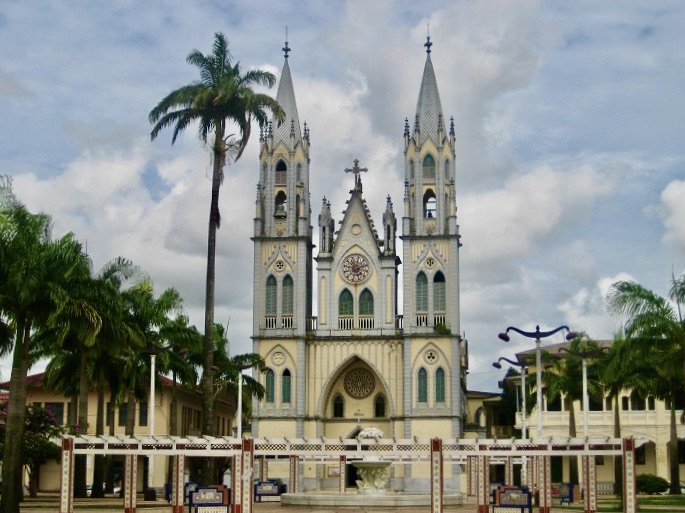

Ureka Waterfalls
It is without a doubt the most gorgeous location in all of the island of Bioko. The breathtaking beach of Sobe may be reached by taking a sharp bend downhill. After that, you will enjoy a leisurely stroll down the most breathtaking beach in the world and gaze in awe at the breathtaking waterfalls. If you do decide to go for a swim, you should use extreme caution due to the strong currents.
Monte Alen National Park
The Monte Alén National Park is located in central Equatorial Guinea. It was founded in 1990. It is the country’s largest national park, covering an area of 2,000 square kilometers. The goliath frog, one of the park’s most notable amphibians, is the world’s largest frog; hunting it is illegal. The natural beauty of this national reserve and the prospect of seeing wild gorillas have made it a popular tourist destination for many years. Time has, unfortunately, sunk a hole in this formerly virgin terrain. With conservation programs like ECOFAC no longer involved, the site has been slowly dying. Although you can’t spend the night there, you should explore and take a stroll around those towering mountains.
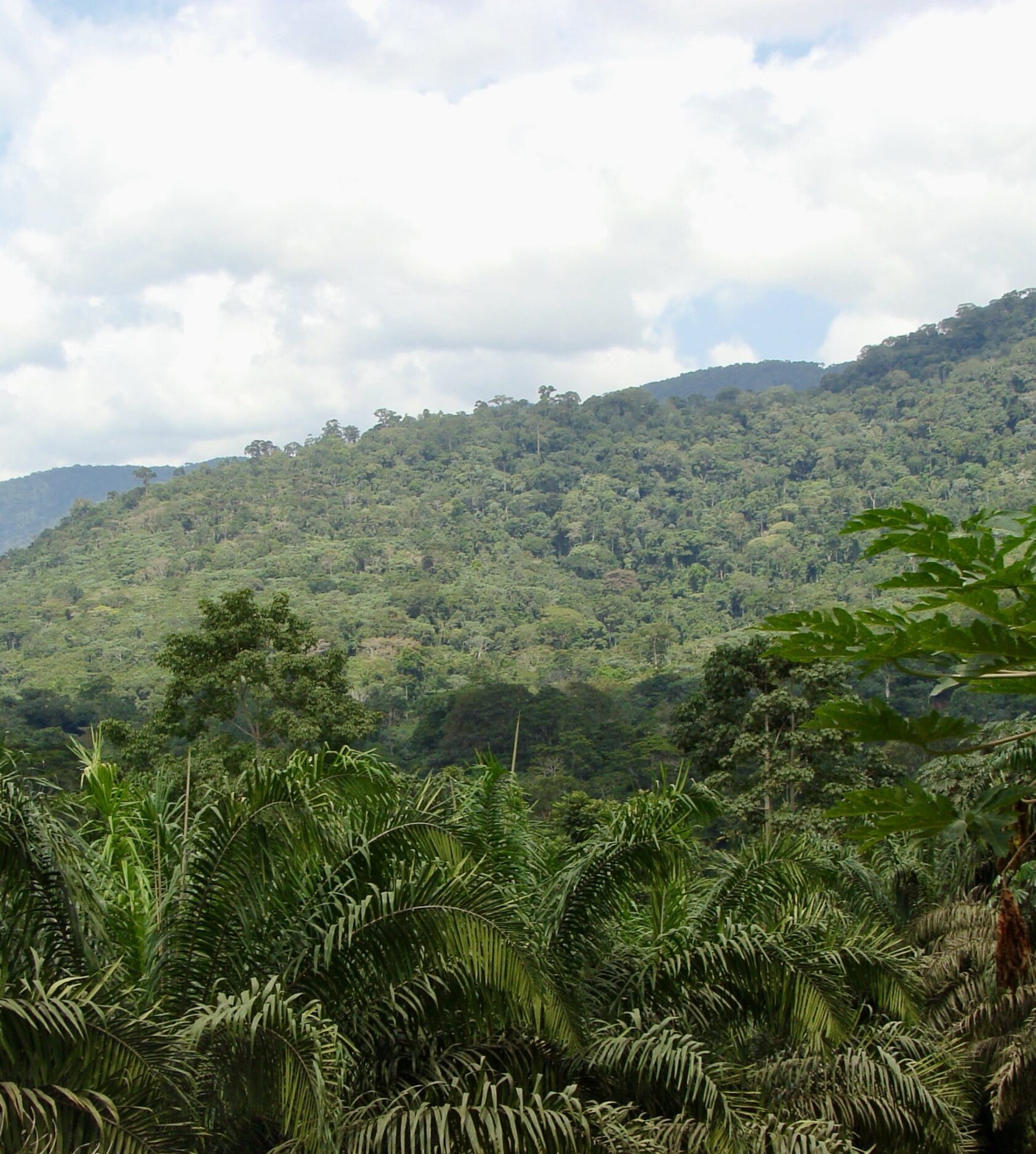
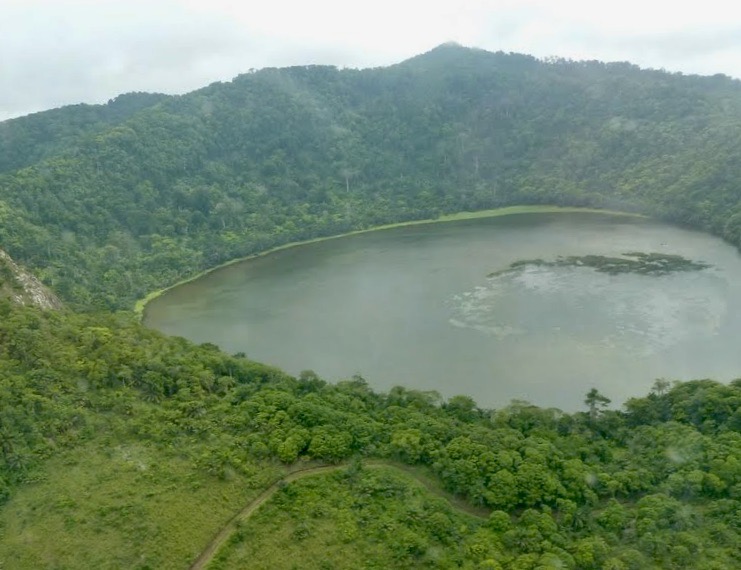
Lago de Mazafim
Lago de Mazafim is a crater lake in Equatorial Guinea also known as Crater Lago, Lago Mazafin, Lago Mazafín, and Lago de Mazufin. It may be found on the island of Annobón, which is located in the Atlantic Ocean, to the south of São Tomé and Principe. It is encircled on all sides by verdant vegetation and picturesque surroundings.
7-day Itinerary in Equatorial Guinea
Days 1 and 2
Arrive in Malabo!
Once you arrive, drop your bags at your accommodation and spend the day sightseeing in Malabo after a hearty breakfast. Equatorial Guinea’s capital city, Malabo, can be found on the northern tip of the island of Bioko. Although the island was initially occupied by the Portuguese in 1494, it subsequently passed back and forth between the British and the Spanish many times until finally gaining its independence in 1968. Thick walls, wrought-iron work, and fashionable shutters and blinds are all hallmarks of the city’s ancient colonial architecture, which bears witness to the city’s colonial past. The piazza in front of the church features beautiful Spanish tilework.
The Cultural Center of Spanish Equatorial Guinea is another must-see whilst in town. Walk out onto the peninsula where the abandoned Hotel Bahia rests and take in the stunning island panorama that Malabo has to offer after your stay. A one of a kind structure constructed around a natural harbor that was formerly the crater of a dormant volcano. Malabo offers the laid-back vibe of a beach town, perfect for unwinding after a long day.

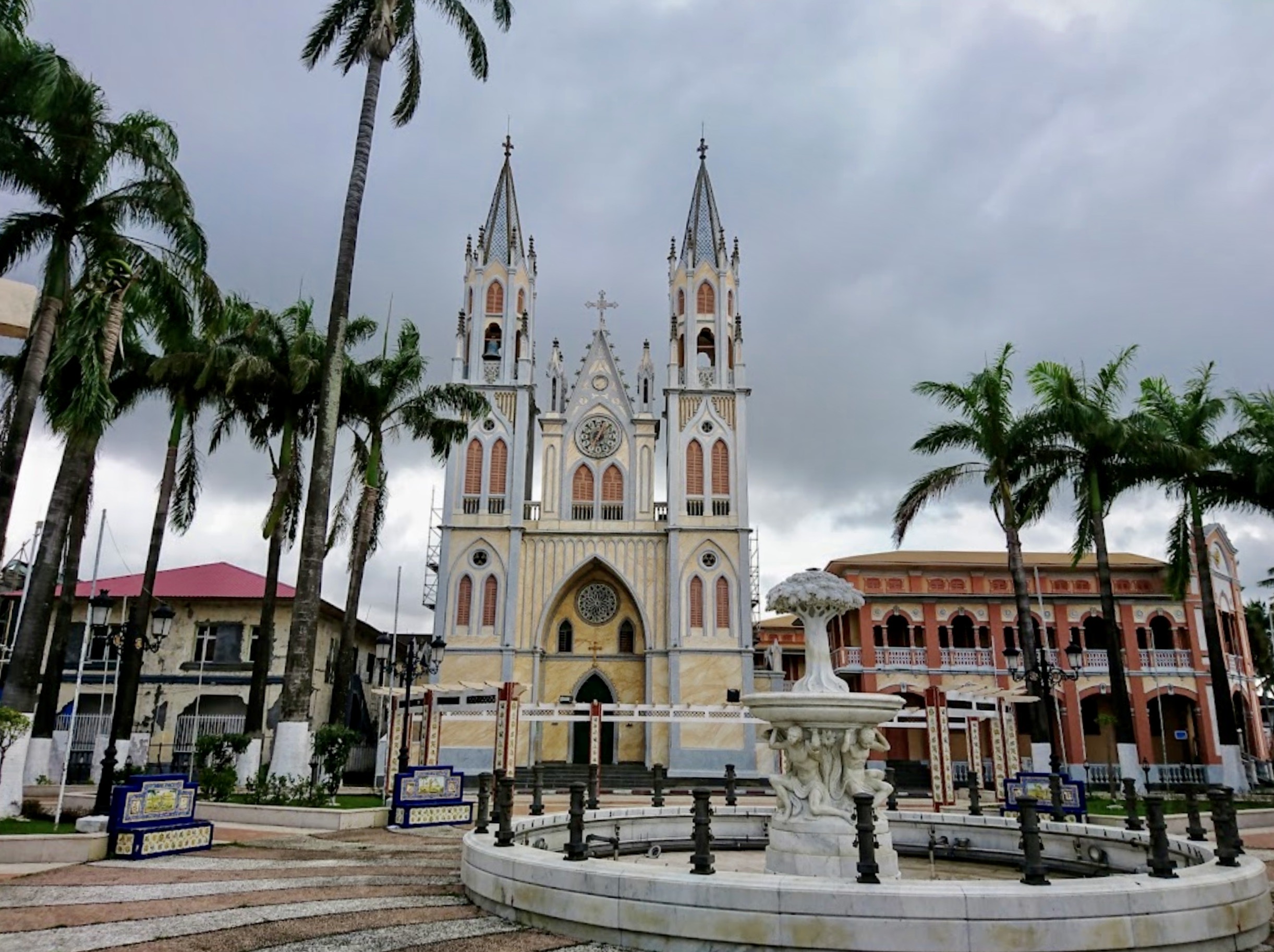
- Backpacker:
- Budget:
- Mid-range:
- Luxury:
Hotel 3 De Agosto
When it becomes dark, a foreign city may be twice as dangerous - especially if you don't understand the language and are unfamiliar with the area. There is reason reason to be alarmed about walking alone in the country, however, there is enough crime recorded in Malabo to warrant some worry. You can walk safely at day, but avoid walking at night and be alert in crowded areas or unlit alleys or streets. You can always take taxis, if you don't feel comfortable, Be wary of petty crime by taking precautions mentioned in the safety section above.
Day 3
Off to Annobon
After breakfast, catch a flight to Annobon Island, which is situated in the Gulf of Guinea and is Bioko’s sister island. As the site of a dormant volcano, Annobón presents visitors with magnificent sightseeing opportunities and spectacular vistas. The island’s terrain is dominated by steep peaks and deep valleys, and it is covered in an abundance of tropical flowers and plants that can be seen from a distance. Lago a Pot is a big crater lake located in the middle of the island and is a tourist destination that should not be missed. It is impossible to forget the breathtaking views. Following the conclusion of your time spent on the island, you will travel back to Malabo.


- Backpacker:
- Budget:
- Mid-range:
- Luxury:
Annobon Island Hotel
When it becomes dark, a foreign city may be twice as dangerous - especially if you don't understand the language and are unfamiliar with the area. There is little reason to be alarmed about walking alone in Annobon, as their isn't enough crime recorded in Annobon to warrant worry. You can walk safely at day, but be alert walking at night, especially in unlit alleys or streets. You can always take taxis, if you don't feel comfortable, or buses. Be wary of petty crime by taking precautions mentioned in the safety section above.
Day 4
Back to Malabo
Today, right after breakfast, go to Northern Bioko to see the beautiful crater lakes of Lago Loreto and Lago Biao. Birdwatchers go to Lago Biao to observe the small egrets and dabchicks (little grebes), palm nut vultures, turacos, and the stunning blue plantain-eaters, all of which may be seen on the trail to the crater. The area is also home to a number of different monkey species, including the black Colobus and the red-eared guenon.
Stop at the neighboring waterfalls, where three tributaries of the Iladyi River drop 250 meters (800 feet) into a chasm. At the top of the greatest cascade, you can gaze out across the unbroken forest and see the other falls. Tomatoes, beans, and other crops thrive in the region’s temperate temperature and nutrient-dense volcanic soil, making it a major agricultural hub. Get back to your Malabo hotel afterward.



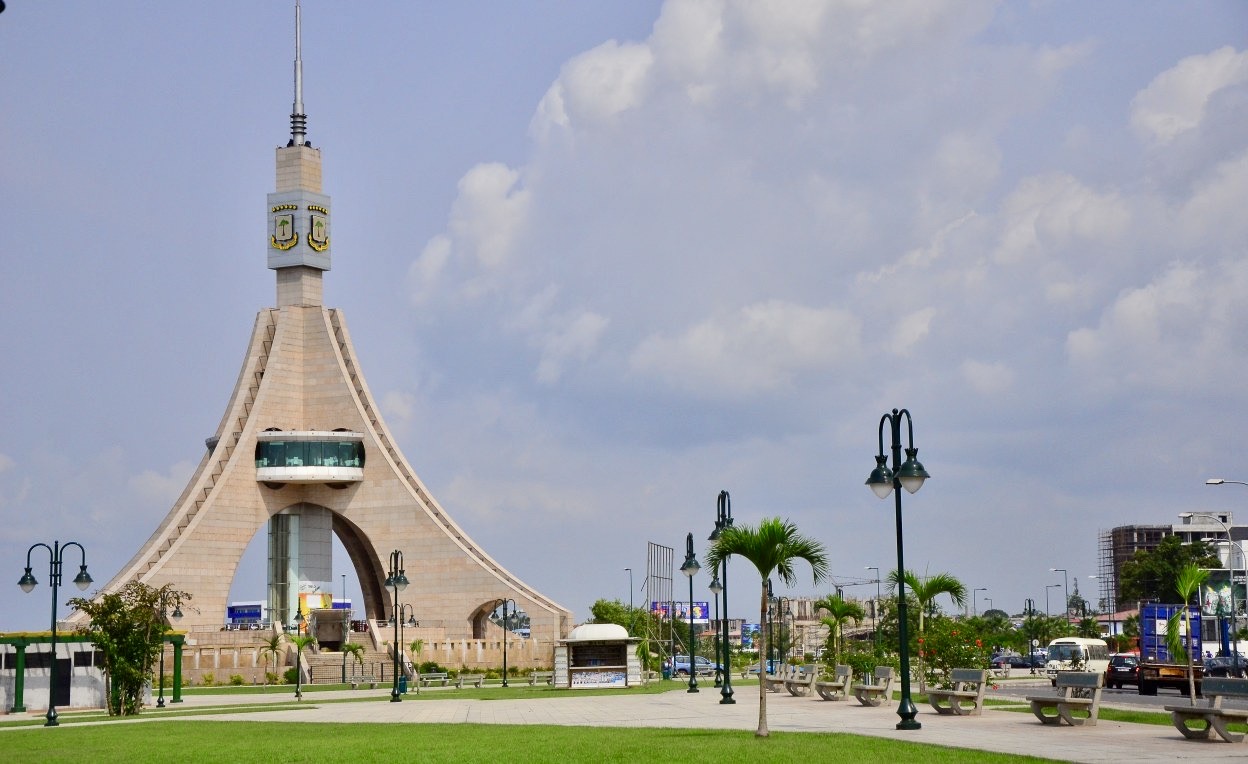
Day 5
Head to Bata
After breakfast, catch a flight to Bata, Equatorial Guinea’s biggest city in its continental portion. This section of your trip will take place on the mainland, giving you the opportunity to see daily life in continental West Africa. Go on a tour of the city as soon as you arrive, preferably with a tour operator.
Bata is the major transit hub for the continental region of Equatorial Guinea, and it was originally used to serve as the capital of Equatorial Guinea.
Among the things to see and do around Bata are Colegio Nacional Enrique Nvó Okenve, Pico Basilé, The Museum of Biyabiyan, Arena Blanca, Santa Isabel Catholic Cathedral, Pico Malabo, Bioko Biodiversity Protection Program, Evinayong, Ureca, Universidad Nacional de Guinea Ecuatorial, and Moca Valley
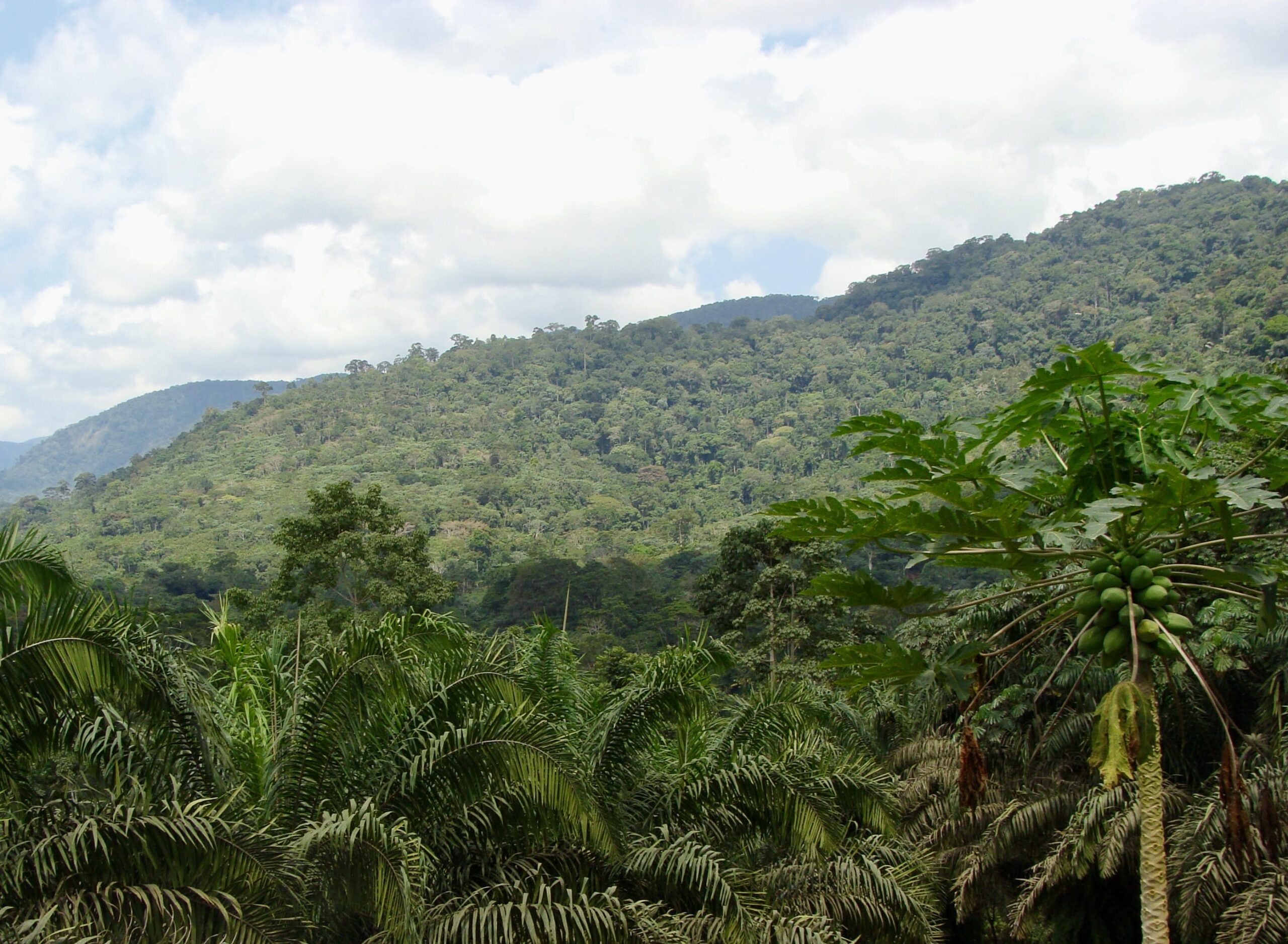
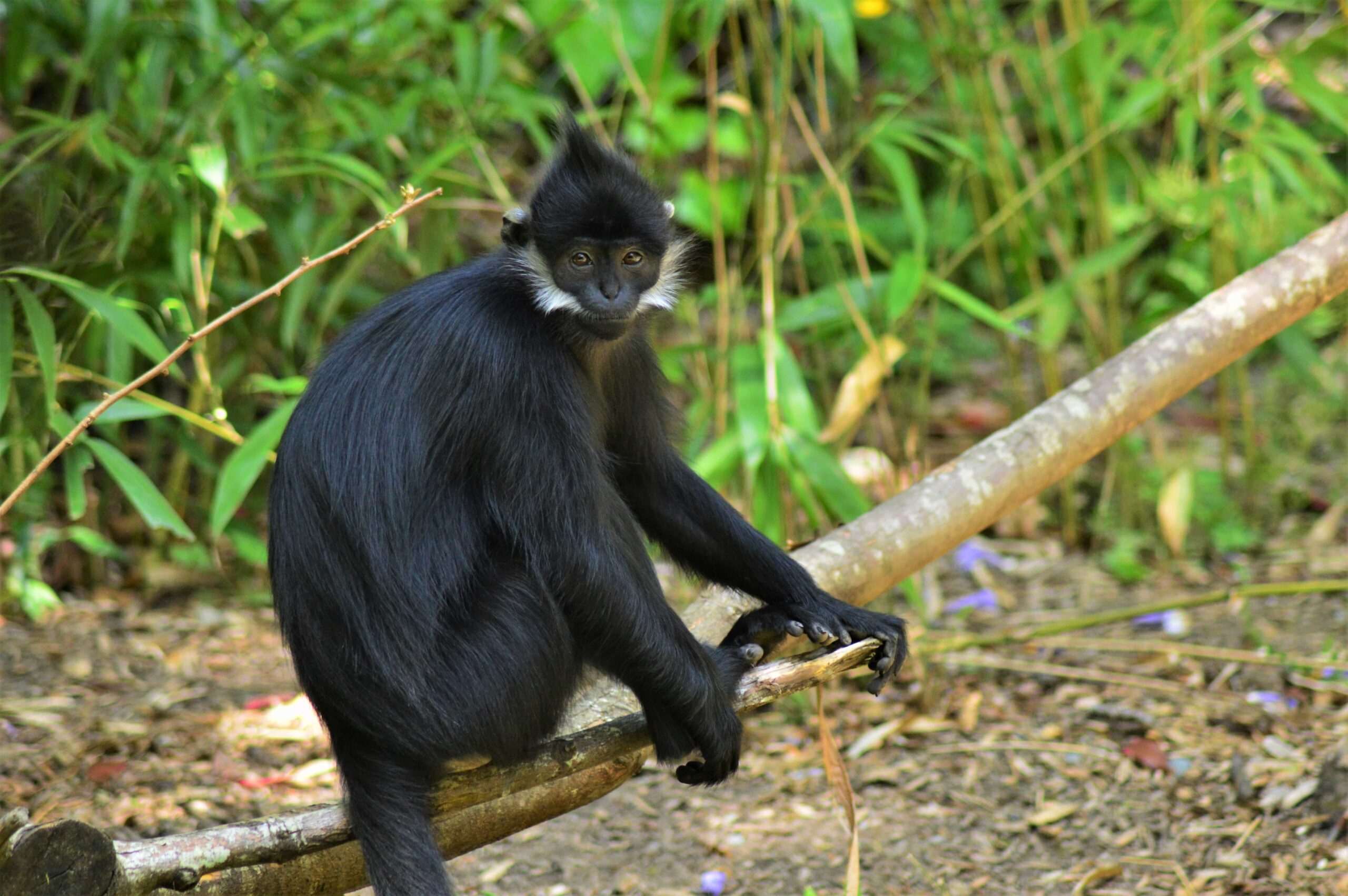
Day 6
Adventures in Monte Alen
Take off to Equatorial Guinea’s Monte Alen National Park after breakfast, and you’ll find yourself in the heart of the country’s lush rainforest. Not as well-known as some of West Africa’s other national parks, Monte Alen is still an incredible natural treasure with a wealth of unique plant and animal life.
In order to get the most out of your journey in Monte Alen, Equatorial Guinea, it is recommended that you hire a local guide upon arrival and go on an expedition into the pristine jungle. There is a high probability that you see elephants, gorillas, mandrills, huge frogs, and several bird species. When you’re done, make your way back to Bata.

Day 8
Last day in Malabo
Since Bata has no direct flights or international flights with the world, you will go back to Malabo. As your final day, after breakfast, head to the airport for your journey back home or to the next destination; but, if you have time, you can take one last stroll around this paradise.
The Most Popular Food in Equatorial Guinea
The cuisine of Equatorial Guinea draws inspiration from both traditional African cuisine and European culinary practices, and is thus widely recognized for its diversity. Urban regions have Spanish-influenced restaurants providing paella and potato omelets, whereas more rural areas rely more heavily on meat and fish. Different ethnic groups in Equatorial Guinea bring with them unique culinary traditions. The Fang, Bubis, Ndowe, Bisios, and Annabonese are among the five primary groups that share the territory of Equatorial Guinea and make up its cuisine diversity. Although there are some meals that are common to all cultures, each has its own particular cuisine. Restaurants around the country now provide Western dishes as well as the traditional ones. Despite their widespread acclaim, many traditional dishes seldom make it into restaurant menus despite their widespread preparation at home.

Pepe-Soup
Pepe-soup is a spicy soup that is made using water, salt, fish, and several spices that are indigenous to the region. This meal is enjoyed by people of all of the country’s many ethnic groups, but for some reason, it is exclusively consumed in the morning, in the presence of close friends or family.

Okro Soup
On the island of Bioko, a local specialty known as ocrosoup is a local delicacy. Undoubtedly, it’s one of the most delicious meals in the cuisine of Equatorial Guinea. It’s a very thick meal that is made with veggies and eaten with banana or cassava as a side dish. It is prepared by chopping the veggies, and dicing the ocro (okra), which is then sliced into small pieces. It is then brought to a boil and seasoned with salt and either chicken or lobster stock before being kept to thicken. After that, it is ready to be consumed and enjoyed.
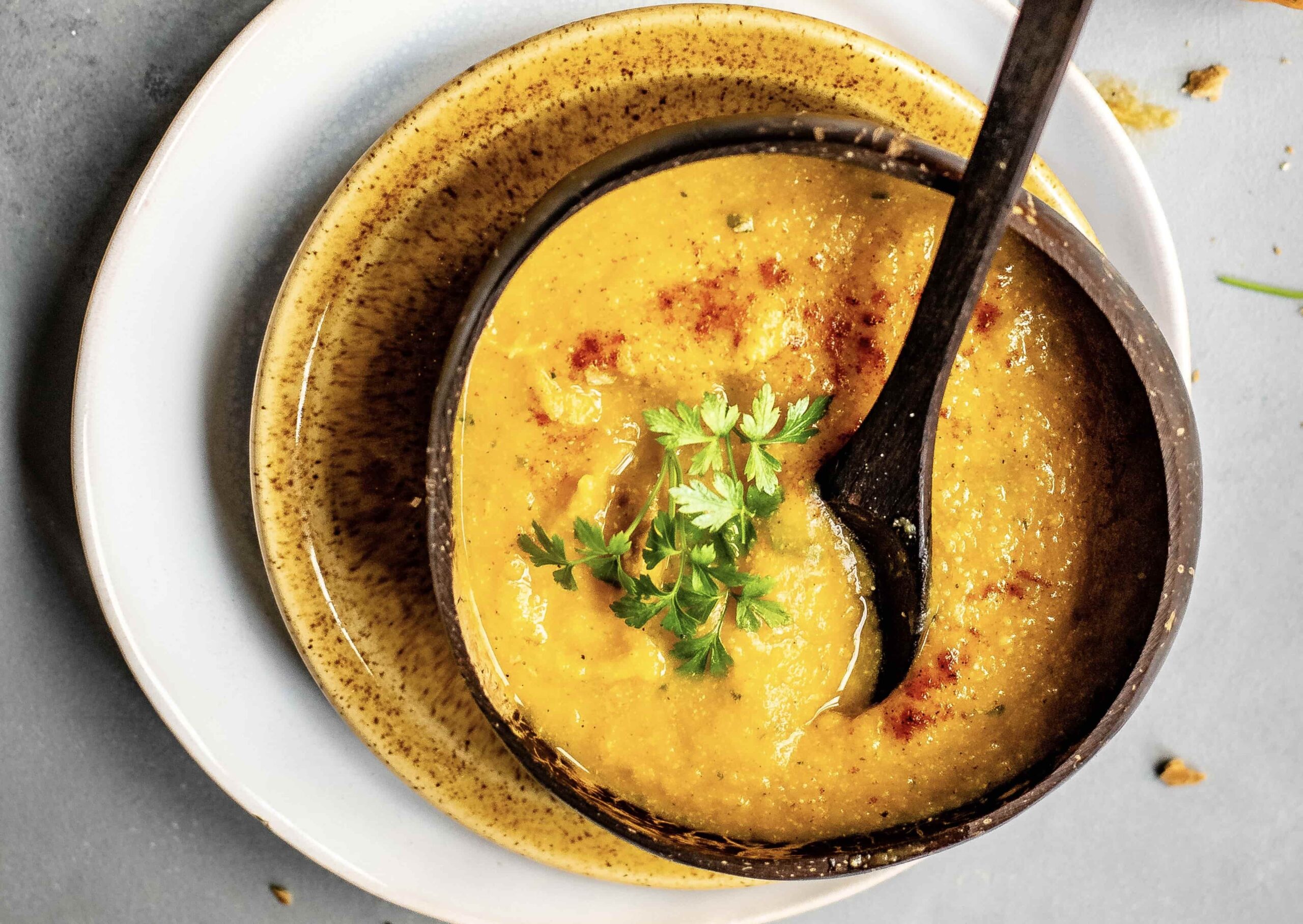
Peanut Soup
The soup is made with varying amounts of viscosity depending on the desired consistency. It can be seasoned and served with taro, rice, cassava, or banana as a side dish. The soup, much like practically all other meals in Equatorial Guinea, always include fish or meat of some form, which results in an intriguing combination of flavors.

Forest Snails Soup
The cuisine of Equatorial Guinea places a great value on mollusks, and one of the country’s most well-known dishes is forest snail. Although most are obtained in the wild, thus the name of the mollusks, there are also some that are cultivated. This meal, which is considered to be one of the most delicious examples of Equatorial Guinean cuisine, is traditionally accompanied by either cassava or plantain.
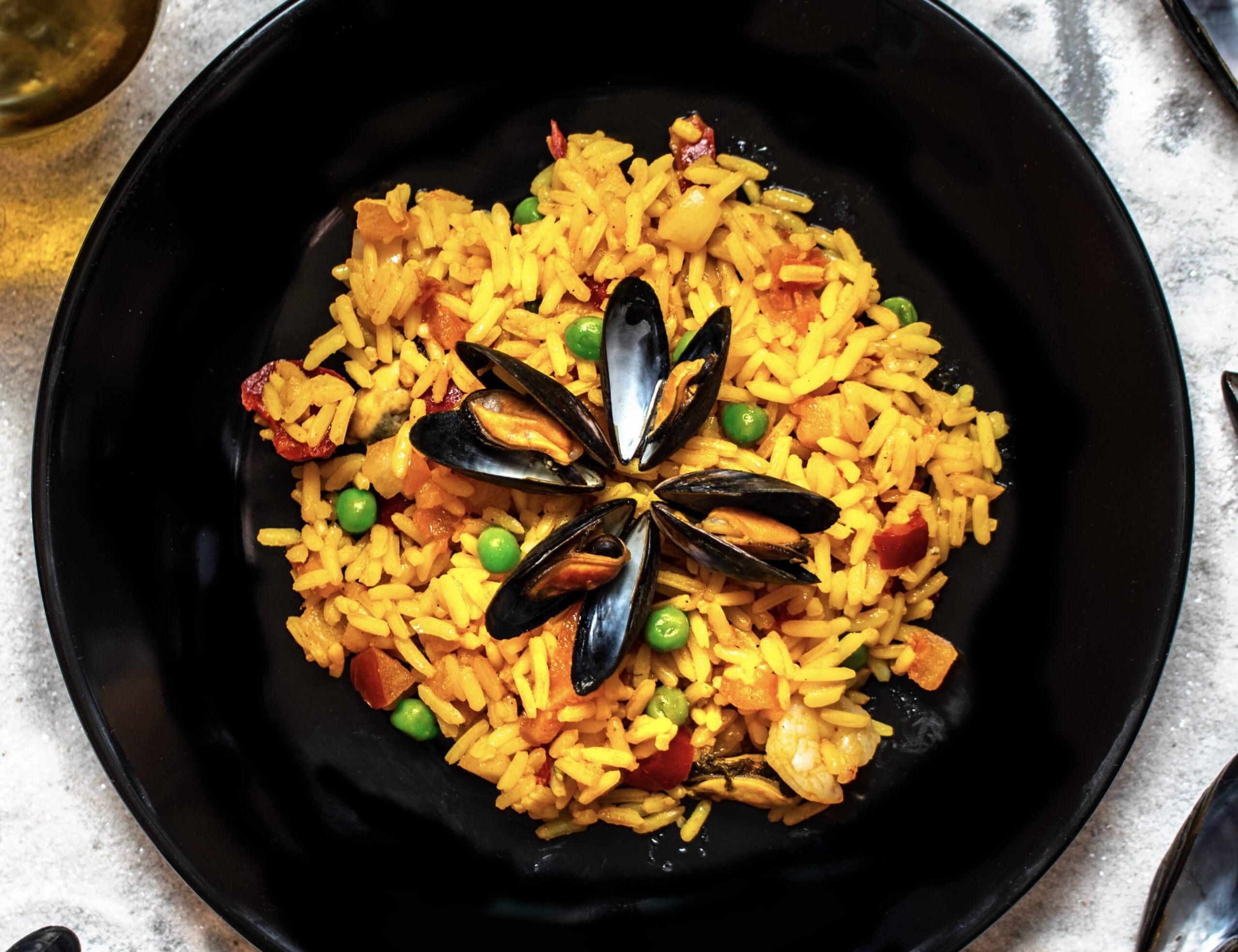
Paella
As a result of the lengthy period of time that Equatorial Guinea was under Spanish rule, several Spanish recipes have made their way into the people’s tables, making it a national cuisine. The typical recipe calls for prawns, and the finished product has a distinctly yellowish hue. Paella rice, as it is often known in the area, is typically served during baptism parties, New Year’s festivities, and almost any other kind of gathering.
What's the Travel Budget for Equatorial Guinea?
Flights
- Flights start at roughly $170 from nearby countries. Tickets however on average cost around $550 and can cost way more depending on which class and from which country you depart from.
Accommodation
- Nomad Backpacking style travelers can expect to spend around $220 for a week
- Budget travelers can expect to spend around $360 for a week
- Mid-range travelers can expect to spend around $470 for a week
- Luxury travelers can expect to spend around $850 for a week
Food Budget (Three meals and drinks)
- Nomad Backpacking style travelers can expect to spend around $14 per person per day
- Budget travelers can expect to pay around $24 per person per day
- Mid-range travelers on average would cost $30 to $45 per person per day
- Luxury travelers can expect to pay around $50 to $75 per person per day
Overall Budget Styles (Not including Flights, Tours, Transportation, or Car Rental)
- Nomad Backpacking style travelers can expect to spend roughly $350 for a week
- Budget travelers can expect to spend close to $560 for one person for a week
- Mid-range travelers can expect to spend approximately $850 for one person for a week
- Luxury travelers can expect to spend around $1,400 for one person for a week
Flights
- Flights start at roughly $170 from nearby countries. Tickets however on average cost around $550 and can cost way more depending on which class and from which country you depart from.
Accommodation
- Nomad Backpacking style travelers can expect to spend around $220 for a week
- Budget travelers can expect to spend around $360 for a week
- Mid-range travelers can expect to spend around $470 for a week
- Luxury travelers can expect to spend around $850 for a week
Food Budget (Three meals and drinks)
- Nomad Backpacking style travelers can expect to spend around $14 per person per day
- Budget travelers can expect to pay around $24 per person per day
- Mid-range travelers on average would cost $30 to $45 per person per day
- Luxury travelers can expect to pay around $50 to $75 per person per day
Overall Budget Styles (Not including Flights, Tours, Transportation, or Car Rental)
- Nomad Backpacking style travelers can expect to spend roughly $350 for a week
- Budget travelers can expect to spend close to $560 for one person for a week
- Mid-range travelers can expect to spend approximately $850 for one person for a week
- Luxury travelers can expect to spend around $1,400 for one person for a week
Flights
- Flights start at roughly $170 from nearby countries. Tickets however on average cost around $550 and can cost way more depending on which class and from which country you depart from.
Accommodation
- Nomad Backpacking style travelers can expect to spend around $220 for a week
- Budget travelers can expect to spend around $360 for a week
- Mid-range travelers can expect to spend around $470 for a week
- Luxury travelers can expect to spend around $850 for a week
Food Budget (Three meals and drinks)
- Nomad Backpacking style travelers can expect to spend around $14 per person per day
- Budget travelers can expect to pay around $24 per person per day
- Mid-range travelers on average would cost $30 to $45 per person per day
- Luxury travelers can expect to pay around $50 to $75 per person per day
Overall Budget Styles (Not including Flights, Tours, Transportation, or Car Rental)
- Nomad Backpacking style travelers can expect to spend roughly $350 for a week
- Budget travelers can expect to spend close to $560 for one person for a week
- Mid-range travelers can expect to spend approximately $850 for one person for a week
- Luxury travelers can expect to spend around $1,400 for one person for a week
Flights
- Flights start at roughly $170 from nearby countries. Tickets however on average cost around $550 and can cost way more depending on which class and from which country you depart from.
Accommodation
- Nomad Backpacking style travelers can expect to spend around $220 for a week
- Budget travelers can expect to spend around $360 for a week
- Mid-range travelers can expect to spend around $470 for a week
- Luxury travelers can expect to spend around $850 for a week
Food Budget (Three meals and drinks)
- Nomad Backpacking style travelers can expect to spend around $14 per person per day
- Budget travelers can expect to pay around $24 per person per day
- Mid-range travelers on average would cost $30 to $45 per person per day
- Luxury travelers can expect to pay around $50 to $75 per person per day
Overall Budget Styles (Not including Flights, Tours, Transportation, or Car Rental)
- Nomad Backpacking style travelers can expect to spend roughly $350 for a week
- Budget travelers can expect to spend close to $560 for one person for a week
- Mid-range travelers can expect to spend approximately $850 for one person for a week
- Luxury travelers can expect to spend around $1,400 for one person for a week
If you want to know what to pack, read this list below:
- This is a casual tropical country with warm weather that tends to get moderate rain, dress accordingly
- Raincoat or Light Waterproof Jacket
- Hiking Boots or Sturdy Sneakers (Shoes You Don’t Mind Getting Wet)
- Sunscreen
- Insect Protection – Repellent and Clothing
- Sunglasses and Sun Hat
- Water Shoes
- Beach Towels/Sarong
- Dry Bag
- Money Belt or Cross Bag
- Portable Medical Kit
- Flashlight or Headlamp
- Copies of your passport.
- Get all the needed vaccinations before traveling
- A power bank is a must in any travel.
- Always have some cash with you just in case there are no ATMs and if you are dealing with a business that solely accepts cash
- Get yourself an adapter for your gadgets
- 1 toothbrush
- 1 tube of toothpaste
- 1 razor
- 1 package of dental floss
- 1 small bottle of shampoo
- 1 small bottle of shower gel
- 1 towel
- Deodorant
- Band-Aids
- Hydrocortisone cream
- Antibacterial cream
- Earplugs
- Tylenol
- Hand sanitizer (germs = sick = bad holiday)
- A key or combination lock
- Zip-lock bags
- Plastic bags (great for laundry)
- Universal charger/adaptor
- LifeStraw (A water bottle with a purifier)
- 1 dry shampoo spray & talc powder
- 1 hairbrush
- Makeup you use
- Hairbands & hair clips
- Feminine hygiene products
Clothing For Boys
- 1 pair of jeans or khaki pants
- 1 pair of shorts
- 1 bathing suit
- 5 T-shirts
- 1 long-sleeved T-shirt
- 1 pair of flip-flops
- 1 pair of sneakers
- 6 pairs of socks
- 5 pairs of boxer shorts
Clothing For Girls
- 1 swimsuit
- 1 sarong
- 1 pair of stretchy jeans
- 1 pair of leggings
- 2-3 long-sleeve tops
- 2-3 T-shirts
- 3-4 spaghetti tops
- 1 light cardigan
Want to plan your own trip, here are some of the best resources that can help you
- Skyscanner – They search small websites and budget airlines that larger search sites tend to miss. They are hands down the number one place to start.
- Momondo – This is another favorite flight search engine because they search such a wide variety of sites and airlines. Always check here too.
- Booking.com – The best all-around booking site that constantly provides the most affordable and lowest rates. They have the widest selection of budget accommodation.
- Couchsurfing – This website allows you to stay on people’s couches or spare rooms for free. It’s a great way to save money while meeting locals who can tell you the ins and outs of their city. The site also lists events you can attend to meet people (even if you’re not staying with someone).
- Intrepid Travel – If you want to do group tours, go with Intrepid. They offer good small group tours that use local operators and leave a small environmental footprint.
- Grassroots Volunteering – For volunteering, Grassroots Volunteering compiles a list of good local volunteer organizations that keep the money within the community.
- Get Your Guide – Get Your Guide is a huge online marketplace for tours and excursions. They have tons of tour options available in cities all around the world, including everything from cooking classes, walking tours, street art lessons, and more! It has the world’s largest collection of things to do with more than 30,000 activities in 7500 destinations.
- SafetyWing – Safety Wing offers convenient and affordable plans tailored to digital nomads and long-term travelers. They have cheap monthly plans, great customer service, and an easy-to-use claims process that makes it perfect for those on the road.
- Trip Advisor: Check the reviews and then book your accommodation. TripAdvisor is where you go when you want to compare prices with multiple accommodation providers.
- VRBO: is the main search engine to use when you are looking for a home or apartment rental. It can sometimes be cheaper than hotels and it is the best way to stay in areas that offer a more local feel.
- Hostelworld: With one of the largest databases of hostels in the world, Hostelworld is the go-to site when you are looking for budget accommodation.
- Rome 2 Rio: If you want to see how to get somewhere by plane, train, bus, ferry, or car Rome2Rio lays it all out for you as well as related costs.
- World Nomads Insurance: When traveling you should always have travel insurance. We have found the best bang for your buck is by far World Nomads.
Final Thoughts on Equatorial Guinea
With its diverse colonial buildings and heritage, breathtaking and unique landmarks, unbelievable warmness, exciting tunes and festivities, and vivid picture-perfect surroundings of forests, pristine beaches best for kicking back, but also wildlife and marine life sighting, Equatorial Guinea has a rich heritage that can be seen across its land dating back to at least the 1000 AD as suggested by recorded history. A fantastic option for anyone seeking one of the least visited, but one of the best African holiday destinations. Equatorial Guinea is breathtakingly beautiful, with magnificent national treasures, flora, diverse wildlife, and spectacular scenery for travelers to enjoy. Would you visit Equatorial Guinea?
Have you ever been to Equatorial Guinea? Please share your thoughts and experiences in the comments area below.